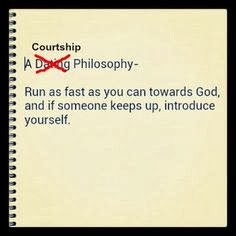
- What is the mac os x powerful tool for application problems called? quizlet how to#
- What is the mac os x powerful tool for application problems called? quizlet upgrade#
- What is the mac os x powerful tool for application problems called? quizlet pro#
However the iPhone SE was only treated to a bump in storage to 32- and 128GB on 21 March.
What is the mac os x powerful tool for application problems called? quizlet upgrade#
Many had anticipated that Apple would upgrade the iPhone SE model to the iPhone SE2 or SEs in March 2017, replacing the existing (and rather popular) SE that was introduced in March 2016. The star of the show, though, was undoubtedly the 10th anniversary iPhone X, with its brand-new virtually full-screen OLED design. Then on 12 September, in another special event we saw updates to the iPhone, Apple Watch and Apple TV, as well as final versions of iOS 11 and High Sierra.
What is the mac os x powerful tool for application problems called? quizlet pro#
The updated Macs and iPads are available now, but we talk more about the all new iMac Pro and HomePod here, as well as the upcoming Mac Pro model. Not ready to subscribe?As expected, Apple unveiled macOS High Sierra and iOS 11 (we share more information on those below), but more of a surprise were the following from the company:Apple also teased the launch of a new Mac Pro, which is expected in 2018. You will also find that if you understand linear equations, then linear functions will be a piece of cake! Click here for more information on our affordable subscription options. In the next lesson we will move onto linear functions.

It's like having your own personal tutor.

Do you find that you need more help with evaluating functions? The Algebra Class E-course offers video tutorials, and practice problems with step-by-step solutions!
What is the mac os x powerful tool for application problems called? quizlet how to#
I hope you are finding this to be pretty easy! You actually already know how to evaluate functions if you can evaluate equations. We label them as f -2 and f 3 to keep them organized. Take a look Do you see how easy it is to keep our answer organized since we have two answers to display? I promise you will have no trouble evaluating function if you follow along. Pay close attention in each example to where a number is substituted into the function. The only difference is that we use that fancy function notation such as "f x " instead of using the variable y. Remember, a function is basically the same as an equation. If you can substitute and evaluate a simple equation, then you can evaluate functions. We are going to "input" a number and our "output" is the answer. You "input" money and your "output" is candy or chips! We're going to go back to that visual as we begin evaluating functions. CC licensed content, Original.In our introduction to functions lesson, we related functions to a vending machine. Did you have an idea for improving this content? Use the resulting output as the input to the outside function. Evaluate the inside function using the input value or variable provided. How To: Given a formula for a composite function, evaluate the function. This is the output of the composite function. How To: Given a composite function and graphs of its individual functions, evaluate it using the information provided by the graphs. Cilek kokusu english subtitles episode 4 dailymotion Evaluate a composition of functions using an equation. Evaluate a Composition of Functions Learning Outcomes Evaluate a composition of functions using a table. Module 6: Algebraic Operations on Functions. Scuola digitale: il direttivo è pronto a fare la sua parte

Enter the functions above into Desmos as they are defined. You can check your work with an online graphing tool. To do this, we will extend our idea of function evaluation. The input value to the outer function will be the output of the inner function, which may be a numerical value, a variable name, or a more complicated expression. When evaluating a composite function where we have either created or been given formulas, the rule of working from the inside out remains the same. When we are given individual functions as graphs, the procedure for evaluating composite functions is similar to the process we use for evaluating tables. We evaluate the inside function first and then use the output of the inside function as the input to the outside function. When working with functions given as tables, we read input and output values from the table entries and always work from the inside to the outside. We will do this with specific numerical inputs for functions expressed as tables, graphs, and formulas and with variables as inputs to functions expressed as formulas. Once we compose a new function from two existing functions, we need to be able to evaluate it for any input in its domain.


 0 kommentar(er)
0 kommentar(er)
